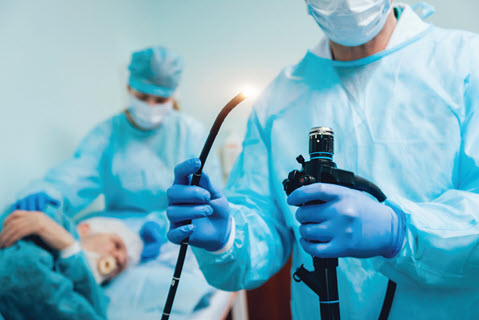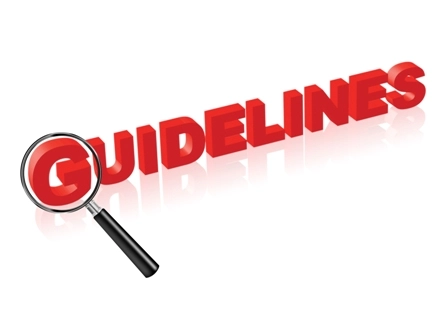Hurdle These Commonly Misused Modifier Challenges
And pick up some documentation tips along the way. As you know, modifiers are useful because they provide the payer additional information for processing a claim. However, when you’re dealing with different services, procedures, and payers, appending the correct modifier can sometimes be the reason a claim is denied. So, if you’ve ever wondered how to appropriately append modifiers to your gastroenterology claims, look no further. Here’s some helpful clarification regarding some of the most commonly misused modifiers. See Dangers of Misusing Modifiers “Modifiers indicate that a service or procedure performed has been altered by some specific circumstance, but not changed in its definition or code,” according to the Medicare Administrative Contractor (MAC) Novitas. “They [modifiers] are used to add information or change the description of service to improve accuracy or specificity.” A modifier modifies the intention because there is a special circumstance of the CPT® code you are reporting, but you are not actually changing the definition of the code itself, explained Pam Vanderbilt, CPC, CDEO, CPB, CPMA, CPPM, CPC-I, CEMC, CPFC, CEMA, owner of Knowledge Tree, Billing, Inc during her HEALTHCON presentation “Unbundling Modifiers: A Risky Business.” When you misuse modifiers, several things can happen, according to Vanderbilt. First, you are risking inappropriate reimbursement. This, in turn, puts you at risk of audits, which puts you at risk of treble damages. These are damages the court awards to the plaintiff in the amount of three times the actual damages. Additionally, your providers are at risk of losing their right to bill insurance, potentially losing their license or even serving jail time, she added. Coders are at risk of losing their credentials and may face monetary penalties and also jail time. Discover Modifier 59 and X{EPSU} Modifiers One commonly misused modifier is modifier 59 (Distinct procedural service). According to the Centers for Medicare & Medicaid Services (CMS), “Modifier 59 is used to identify procedures services, other than E/M services, that are not normally reported together but are appropriate under the circumstances. Documentation must support.” A “distinct” procedural service can be described as the following, per Vanderbilt: Example 1: Your gastroenterologist performs a colonoscopy and removes multiple polyps and a biopsy is also required. In this case, you should append modifier 59 to the second code to indicate the procedures were performed on different lesions in different regions. The modifier also explains that your provider performed two different services during the colonoscopy. For example, you might report 45385 (Colonoscopy, flexible; with removal of tumor(s), polyp(s), or other lesion(s) by snare technique) and 45380-59 (Colonoscopy, flexible; with biopsy, single or multiple). Example 2: For an upper GI endoscopy with dilation, which you might report with 43249 (Esophagogastroduodenoscopy, flexible, transoral; with transendoscopic balloon dilation of esophagus (less than 30 mm diameter), report 43239-59 (Esophagogastroduodenoscopy, flexible, transoral; with biopsy, single or multiple) if your gastroenterologist also biopsied a different lesion in a different site during that same procedure. However, when another already established modifier is appropriate, you should use it rather than modifier 59, Vanderbilt explained. In gastroenterology, this may mean accounting for laterality, using modifiers such as RT (Right side), LT (Left side), or 50 (Bilateral procedure). If the anatomical modifiers apply, then you should not use modifier 59 because the anatomical location is what would support the unbundling of those services, Vanderbilt explained. X modifiers: On the other hand, if anatomical modifiers don’t apply, you should be look next at the following X{EPSU} modifiers: If modifier 59 were an ICD-10-CM code, it would be considered unspecified, Vanderbilt explained. The X{EPSU} modifiers are the equivalent of reporting 59 with a higher level of specificity. Caution: If the anatomical or X{EPSU} modifiers don’t apply, it is likely that your services should not be unbundled, Vanderbilt said. That means that instead of two CPT® codes, you should only report one. Know When to Append Modifier 53 Modifier 53 (Discontinued procedure) is often misunderstood, partly because of its similarity to modifier 52 (Reduced services). Essentially, when you use modifier 53, you’re identifying a situation where the physician terminates the procedure due to extenuating circumstances or those that may threaten the patient’s well-being. This differs from modifier 52, which you should use when the physician completes the procedure but elects to reduce a portion of the service or procedure, though not because the patient’s well-being is in question. In the case of colonoscopies, you can append modifier 53 without patient well-being as a factor. For example, your gastroenterologist performs a screening colonoscopy and was able to advance to the cecum. However, due to poor prep which limits visualization, the provider cannot continue and therefore requires the patient to return in one month to repeat the screening exam. Using modifier 53 in this scenario stops the clock and allows the patient a full screening benefit when they return for the complete procedure. Documentation alert: When coding with modifier 53, you should provide easy-to-read, clear, concise documentation explaining in specific detail what the procedure accomplished, what percent your GI completed, the patient’s condition, the extenuating circumstances that caused the discontinuation, and the detailed operative report. Be sure to check with your payers because some may refuse to pay for this modifier or have particular requirements for its use.





